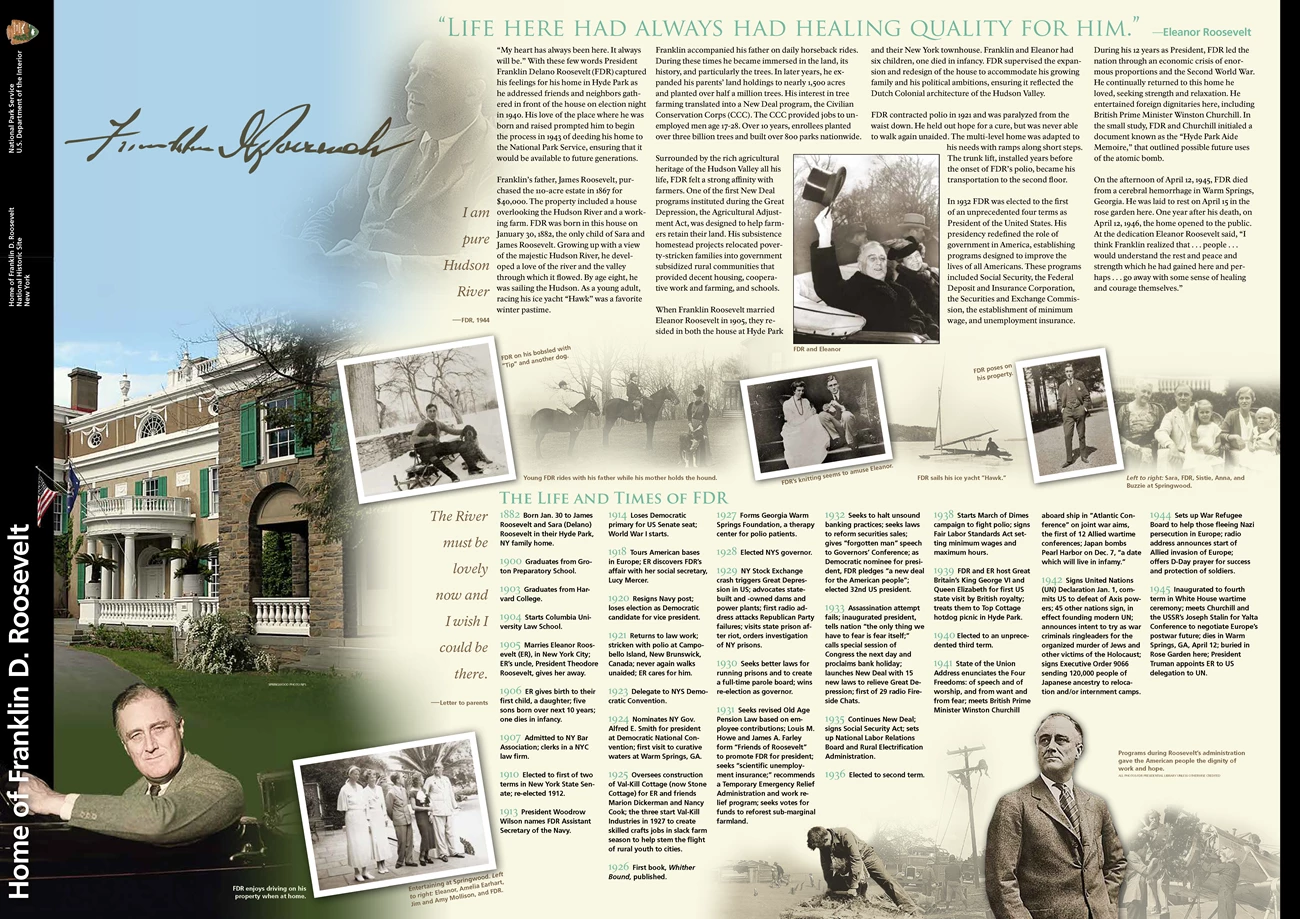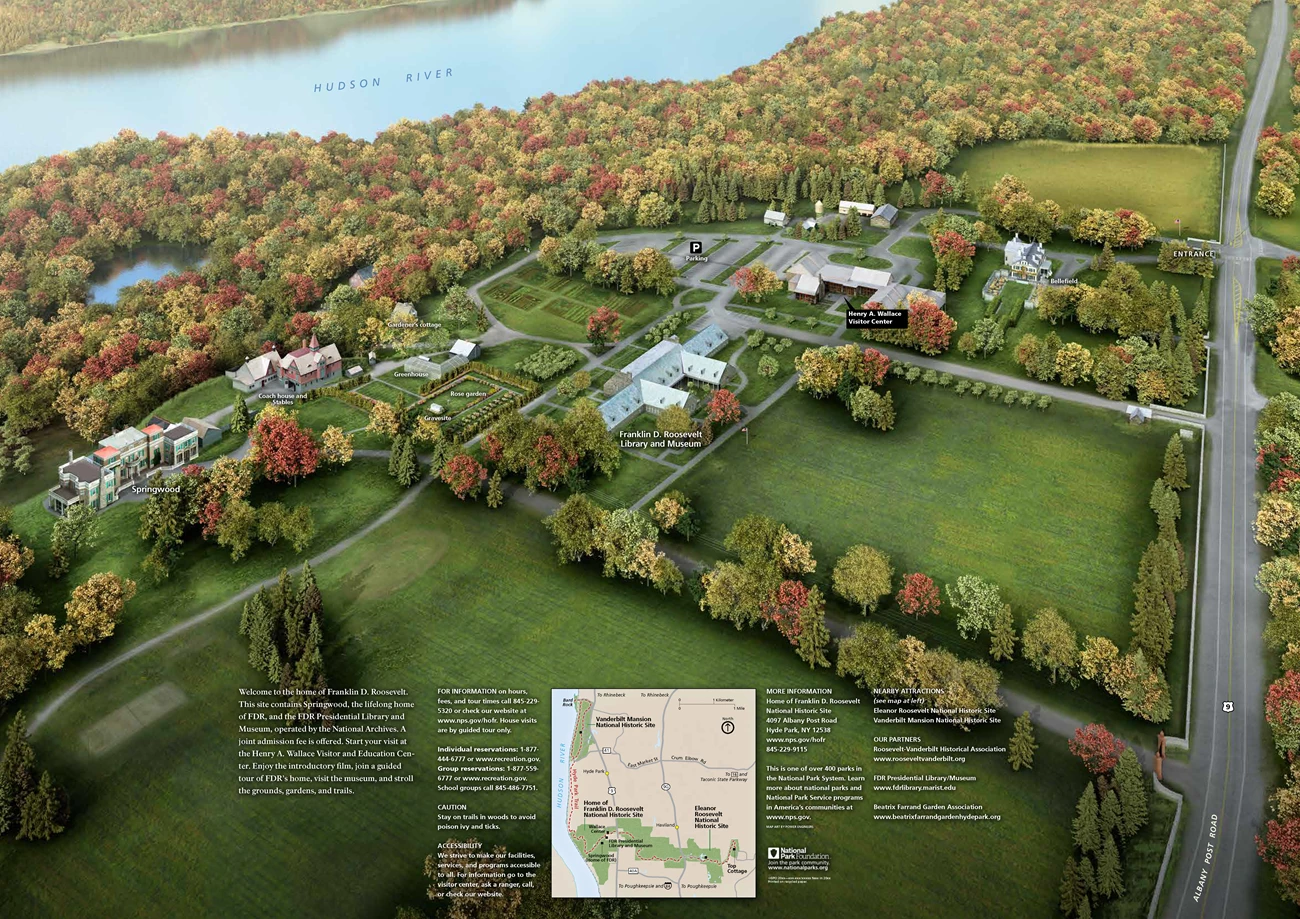|
The park brochure is available in a variety of formats. The current page contains images of both sides of the Home of FDR brochure. On another webpage, a braille version and a text only version of the brochure are available. An audio described version with transcripts is also available to download or listen to on our website. You may request that a print copy be mailed to you. Brochure Images

|
Last updated: September 21, 2024
